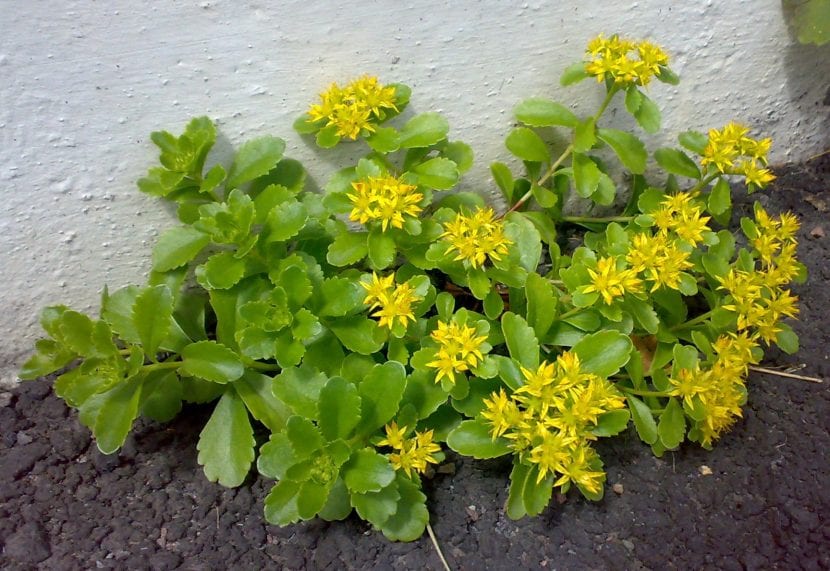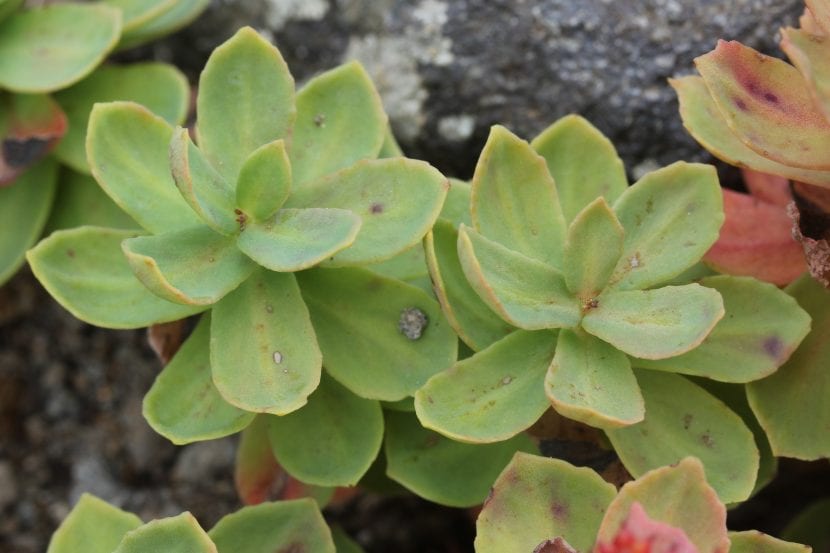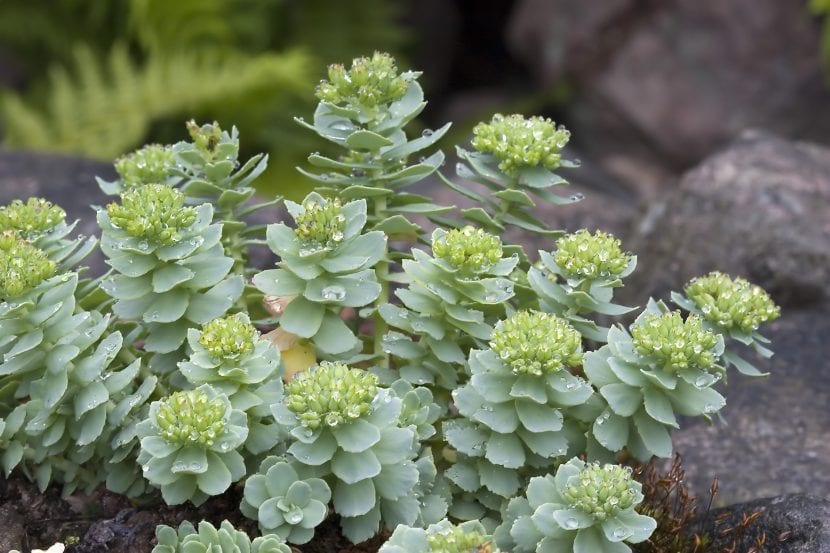
La Rhodiola rosea It is a non-cactus succulent plant or crass plant that, in addition to being very decorative and having a very simple maintenance, has very interesting medicinal properties for everyone, even for those who love the high mountains.
It is a species that grows in cold regions of the northern hemisphere, so if you live in an area where significant frosts occur, this will undoubtedly be your best plant. 😉
Origin and characteristics of Rhodiola rosea

Our protagonist is a plant that inhabits the alpine floor of the highest mountains in the world, such as the Himalayas, the Rocky Mountains, the Alps, the Pyrenees and the Carpathians. It is a lively herbaceous, that is, it loses its leaves in winter but sprouts again in spring, with a maximum height of 30 centimeters. The leaves are arranged in a spiral, measure 0,7 to 3,5 cm long by 0,5 to 1,8 cm wide and are glaucous in color, without villi.
Flowers bloom in early and mid summer, and appear distributed in compact inflorescences. There are male, which are yellow or orange, and female, which are purple. The fruit is 6 to 12mm long and is red. The seeds are small, 1 to 1,5mm, elongated and brown.
As a curiosity, say that if the plant is damaged it emits an odor similar to that of the rose.
How is it grown?
If you want to get a copy, here is how to take care of it:
- Location: outside, in semi-shade. If you live in an area with a temperate-cold climate, you can put it in the sun.
- Soil or substrate: it is not demanding, but it must have good sewer system.
- Irrigation: 2-3 times a week in summer and a little less the rest of the year.
- Planting or transplanting time: in spring.
- Multiplication: by seeds in spring, and by stem cuttings in spring or summer.
- Rusticity: withstands strong frosts of -30ºC without problems; however, hot weather can hurt you.
What uses does Rhodiola rosea have?

It has several uses:
- Ornamental: it is a very decorative plant, ideal for gardens but also for growing in pots.
- Medicinal: improves the immune system, fights depression, improves mood, reduces stress level, is antioxidant, prevents fatigue and, as if that were not enough, it can be used to prevent and as a complementary treatment for altitude sickness, a very common problem in mountaineers.
What did you think of this plant? Did you know her?